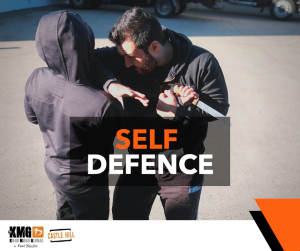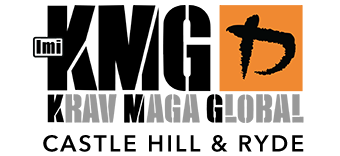
Continuing from our previous post, we will talk about another pillar of Krav Maga; the aspect of self-defence.
Emerging out of the needs of a persecuted resourced strapped minority defending itself against those bent on its destruction, Krav Maga was developed through extensive experience in the war for survival and in face-to-face confrontations.
–
“Krav Maga is not a sport. It’s not a martial art. You won’t see Krav Maga in the Olympics, nor will you see it in a competition.”
Self-defense is fundamentally a ‘problem-solving‘ activity. Learning how to respond to specific problems (various types of attacks) by applying system principles in order to escape, solve the problem, overcome the attacker, and escape to safety. KMG self-defense training teaches techniques, principles, and mindset to overcome any type of physical attack, whether it is sudden, unexpected violence or an escalation of a confrontation (including unarmed and armed attacks, multiple attackers, and more). Krav Maga’s focus is to ensure that the “agressor(s) is/are unable or unwilling to pursue their attacks.”
“Every fraction of a second counts.”
KMG’s approach to self-defence includes the notion of a “timeline.” Early stages of the timeline include prevention through avoidance. It is better altogether to prevent a situation from occurring rather than waiting for the last moment to take action. We can take pre-emptive actions and exercise tactics to increase our chances of safety and minimal risk. Such things can include being aware of your environment and where are the closest exits for an escape route, what environmental obstacles that may prevent you from moving or can be used for advantage against attackers (doorways, immovable tables and chairs, cars etc) or locating and equipping a common object that may be used for an improvised defence and counter-attack. In the instance where the early stages of the timeline have been missed due to distractions or being unaware of the situation, moving to defuse the situation is another tactic that can be deployed. It is important to note, that in the age of social media, we should always assume that we are being filmed and that there are witnesses. Utilising verbal apologetic remarks and gestures through body language or giving direct commands should be used in an attempt to stop or distract the aggressor.
–
KMG’s approach to self-defence includes the notion of a “timeline.” Early stages of the timeline include prevention through avoidance. It is better altogether to prevent a situation from occurring rather than waiting for the last moment to take action. We can take pre-emptive actions and exercise tactics to increase our chances of safety and minimal risk. Such things can include being aware of your environment and where are the closest exits for an escape route, what environmental obstacles that may prevent you from moving or can be used for advantage against attackers (doorways, immovable tables and chairs, cars etc) or locating and equipping a common object that may be used for an improvised defence and counter-attack. In the instance where the early stages of the timeline have been missed due to distractions or being unaware of the situation, moving to defuse the situation is another tactic that can be deployed. It is important to note, that in the age of social media, we should always assume that we are being filmed and that there are witnesses. Utilising verbal apologetic remarks and gestures through body language or giving direct commands should be used in an attempt to stop or distract the aggressor.
–
Pre-emptive maneuvres
Responding with pre-emptive attacks to avoid a violent confrontation is an option. However, if you attack someone without understanding the legal process, you may lead you to be arrested and charged. Certain factors must be evident if you decide to confront someone because you are afraid for your own or others’ safety. If the aggressor has the ability, intent, and opportunity to cause harm AND you have no other option, such as escape, a pre-emptive strike MAY be justified. Of course, you may seek legal counsel to gain a better understanding of this strategy. As this article only covers a number of pre-fight tactics and considerations, this doesn’t include the techniques and tactics utilised during an altercation, or post-fight scenario options. Being able to prevent an incident, is just as important (if not more) than being able to escape safely from harm. Through training, you will learn further solutions that are available to consider that you can implement as part of your training and regular practice to make it second nature.
Responding with pre-emptive attacks to avoid a violent confrontation is an option. However, if you attack someone without understanding the legal process, you may lead you to be arrested and charged. Certain factors must be evident if you decide to confront someone because you are afraid for your own or others’ safety. If the aggressor has the ability, intent, and opportunity to cause harm AND you have no other option, such as escape, a pre-emptive strike MAY be justified. Of course, you may seek legal counsel to gain a better understanding of this strategy. As this article only covers a number of pre-fight tactics and considerations, this doesn’t include the techniques and tactics utilised during an altercation, or post-fight scenario options. Being able to prevent an incident, is just as important (if not more) than being able to escape safely from harm. Through training, you will learn further solutions that are available to consider that you can implement as part of your training and regular practice to make it second nature.
–
In our next post, we will discuss the third pillar of Krav Maga training, fighting skills.
| Sign up for our starter programs and start training: https://www.kravmagaselfdefence.com.au/#join |


